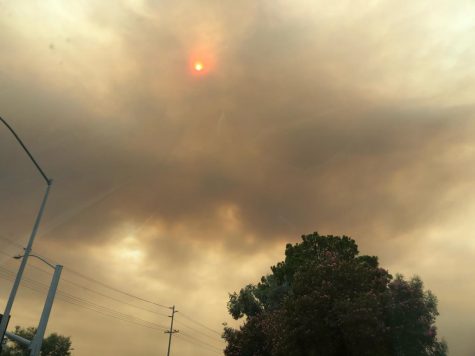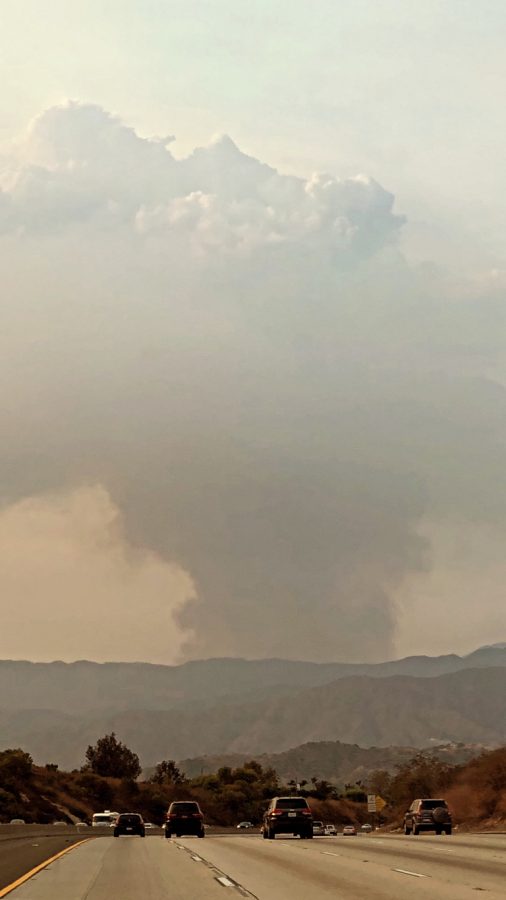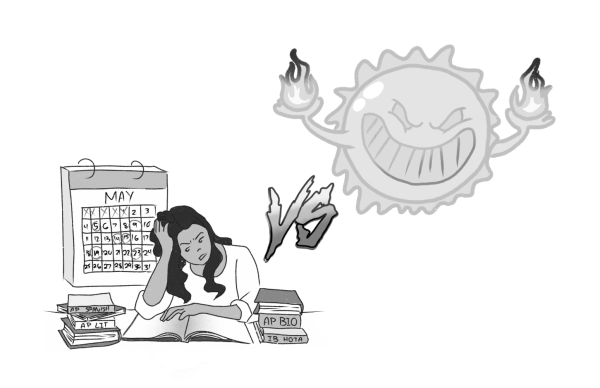Wildfires Raging Across the West Coast Devastates Claremont’s Air Quality
Smoke from California Wildfires looms over freeway to Claremont
Throughout the past few weeks, the fires across the entire West Coast have been raging, seemingly without relent. Millions of people have been called to evacuate their homes by fire departments, and the ash has been seen falling, even from a few dozen miles away.
“Yeah it was evident from my lawn,” youth pastor Jon Fong said, referring to the fires. “At one point I could step out and I could look up towards the mountain region and I could see the fires.”
Fong, who lives in Arcadia, later mentioned that he was forced to evacuate and stayed in hotels on the coast multiple times in the past few weeks. His area has improved a lot more and he only gets an email his local fire department once every 3-4 days, whereas he used to get them daily.
Although the fires have not come to the front doorstep of many, poor air quality was still a hassle and it brought lots of fears along with it.
“The air quality was terrible,” CHS junior Rohan Shivaram said. “I wasn’t even able to go outside to walk my dog. The fires didn’t personally affect me and my family, but I was still fearful that something could happen.”
Shivaram lives up in the hills in Claremont, where it is very dry and prone to fires.
Although Claremont’s air quality has recovered to moderate levels by the end of September, the city has seen an AQI of at least 100 in 16 of the first 20 days of the month, including a hazardous 222 AQI on the 13th, according to IQAir data.
During the week of September 13-19, CNN reported that the West Coast had the world’s worst air quality, with regions like San Francisco and Portland having unhealthy air quality. The sky in these cities has turned orange and red in some instances. Forecasters state that they do not see an end in sight for the fires and poor air quality.
Historically, California has been no stranger to wildfires. According to a UC Berkeley research paper by Stephens et al. in 2007 concerning forest ecology and management, the state had seen 1.8 million hectares burned every year before 1800. The most recent ones, however, have proven to be the most dangerous. The top 10 wildfires by area burned were all in the last 20 years, with 4 of the top 5 being in the past few weeks (August, SCU Lightning, LNU Lightning, and North Complexes).
Climate change has been considered as a key cause of the wildfires.
The Center for Climate and Energy Solutions stated, “For much of the U.S. West, projections show that an average annual 1 degree C temperature increase would increase the median burned area per year as much as 600 percent in some types of forests.”
In the first weekend of September, which was around the time the fires began to garner more attention as they wreaked more havoc, many areas of the state were experiencing temperatures over 110 degrees Fahrenheit.

While these fires rage, all people can do is stay safe and healthy. According to the CDC, you can do the following things to cope with the fires: set up a portable air filter or cleaner, wear a respirator to reduce smoke, drink lots of clean water, do not use anything that produces smoke, and set up an emergency plan in the case that an evacuation occurs. For more information, visit the CDC website, under “Natural Disasters and Severe Weather” and “Wildfires.”
For now, the citizens of Claremont, along with a great part of the West Coast, have to deal with the consequences of the fire. Smoke continues to coat the air from time to time behind the mountains. All people can do is stay safe and calm as the fire departments and First Responders do their best to make sure everything returns to normal as soon as possible.
Hello there! Our goal is to provide relavent, engaging journalism for readers of all ages. Your donation will support the student journalists of the Wolfpacket at Claremont High School, and will allow us to purchase equipment, print our monthly issues, and enter in journalism competitions. We appreciate your consideration!

David Begazo is a senior at CHS and an Opinions Co-Editor for the Wolfpacket. He loves to write articles and was lured by the Opinions section due to the...








